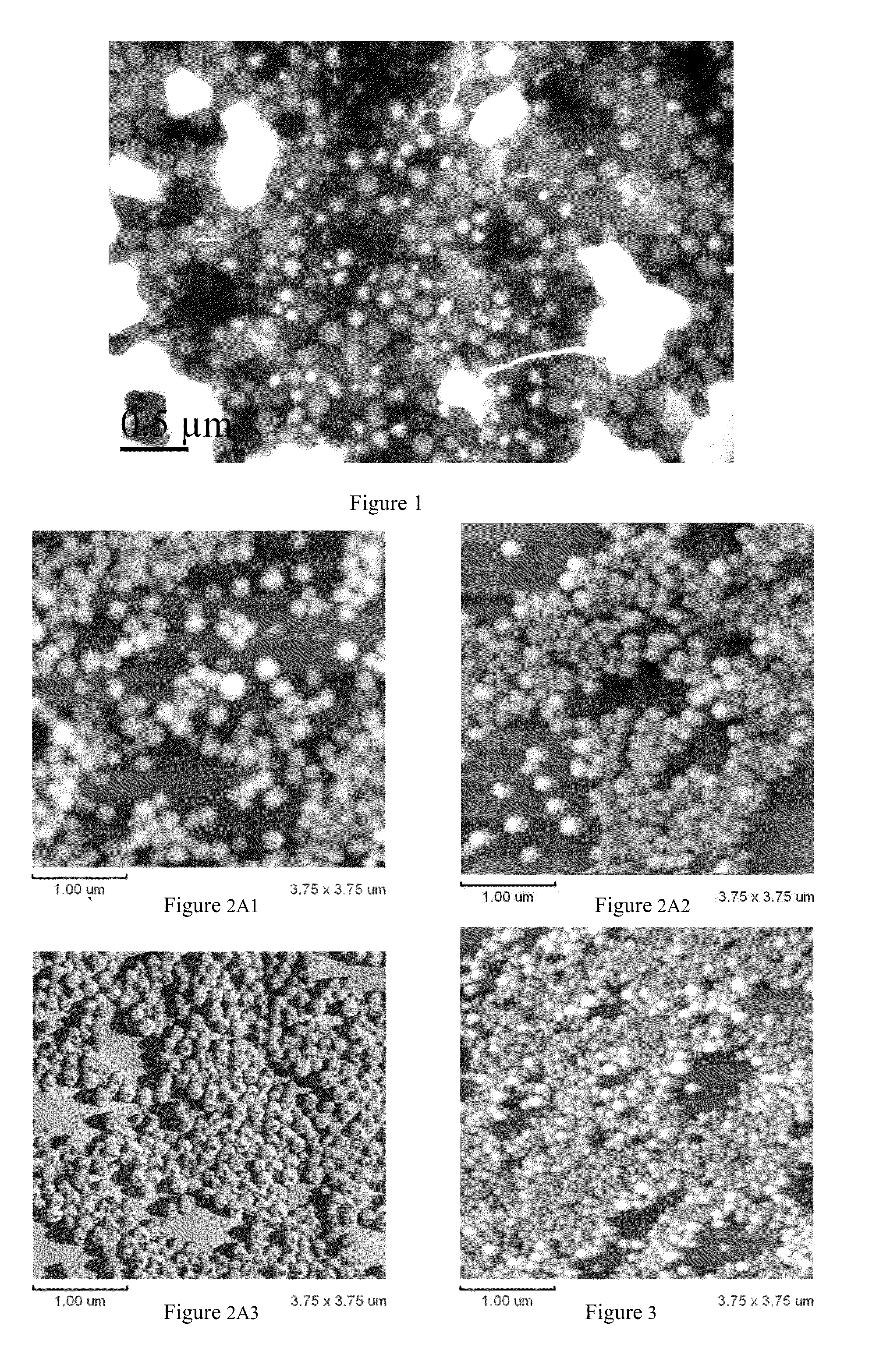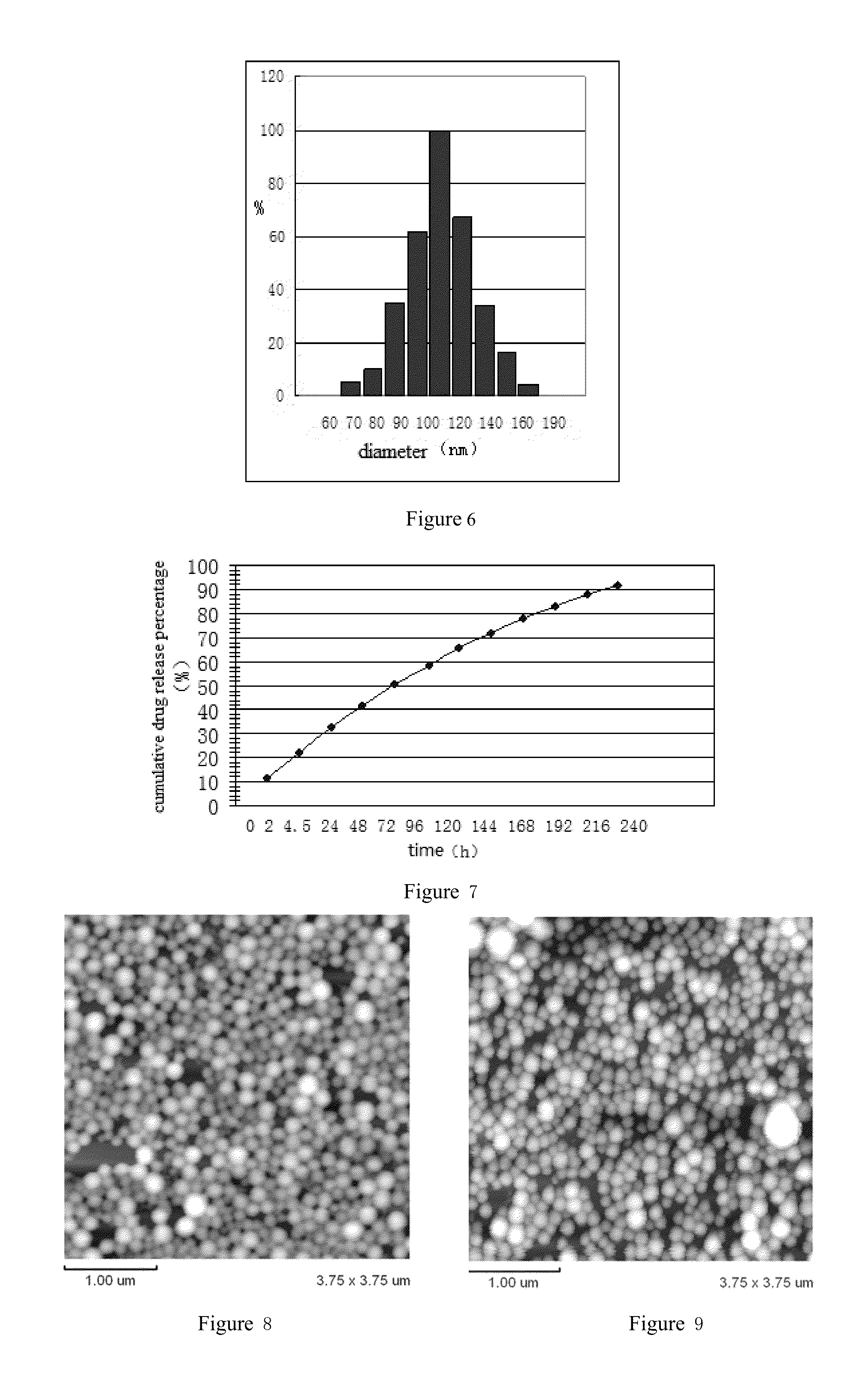Arsenic Compound Solution and Albumin Nanoparticle and Lyophilized Preparation Entrapping Arsenic Compound Prepared Using Same
a technology of arsenic compound and solution, which is applied in the direction of peptide/protein ingredient, drug composition, immunological disorders, etc., can solve the problems of gastrointestinal bleeding, osteoporosis, many complications of treatment, etc., and achieve good drug effects and well-defined structure
- Summary
- Abstract
- Description
- Claims
- Application Information
AI Technical Summary
Benefits of technology
Problems solved by technology
Method used
Image
Examples
example 1
Preparation of the Arsenic Compound Solution
[0061]120 mg of As2O3 powder (99.9% of purity) is accurately weighed and added into a flask with 8 ml of sterile deionized water, to create a suspension. The suspension is heated, a 1 mol / L NaOH solution is added dropwise until the powder has completely dissolved; subsequently a 0.1 mol / L NaOH solution is added to adjust the pH level to 8.4, and sterile deionized water is added to obtain a final volume of 15 ml of arsenic compound solution, with a concentration of 8 mg / ml in terms of the As2O3 powder added.
example 2
Preparation of Arsenic Compound-Loaded HSA or BSA Nanoparticles
[0062]① 0.45 ml of arsenic compound solution prepared in Example 1 is absorbed;
[0063]② 60 mg of HSA or BSA and sterile deionized water are mixed to create an albumin solution with concentration of 1.2% (g / ml). The albumin solution is then filtered through a 0.22μ membrane and into a sterile container;
[0064]③ the arsenic compound solution and the albumin solution are mixed, then a 0.1 mol / L NaOH solution is added again to adjust the pH to 7.6; then a 50 mmol / L NaCl solution is added until the final NaCl concentration is 10 mmol / L. A dehydrating agent is added at a rate of 1 mL / min at room temperature (anywhere from 25-30° C.) with stirring at a rate of 1000 rpm. The dehydrating agent is a mixture of ethanol and acetone with a volume ratio of 3:1, has a volume of about 12 ml and is added until the emulsion appears. After that, stirring continues for 30 min, resulting in an opalescent emulsion;
[0065]④ the opalescent emulsio...
example 3
[0069]The differences between this example and Example 2 are as follows, a 0.1 mol / L NaOH solution is used to adjust pH to 8.0; the volume of the dehydrating agent is about 14 ml; physical curing temperature is 70° C.; and the time required for curing is 60 min. The other steps are the same as Example 2.
PUM
| Property | Measurement | Unit |
|---|---|---|
| concentration | aaaaa | aaaaa |
| concentration | aaaaa | aaaaa |
| concentration | aaaaa | aaaaa |
Abstract
Description
Claims
Application Information
 Login to View More
Login to View More - R&D
- Intellectual Property
- Life Sciences
- Materials
- Tech Scout
- Unparalleled Data Quality
- Higher Quality Content
- 60% Fewer Hallucinations
Browse by: Latest US Patents, China's latest patents, Technical Efficacy Thesaurus, Application Domain, Technology Topic, Popular Technical Reports.
© 2025 PatSnap. All rights reserved.Legal|Privacy policy|Modern Slavery Act Transparency Statement|Sitemap|About US| Contact US: help@patsnap.com



